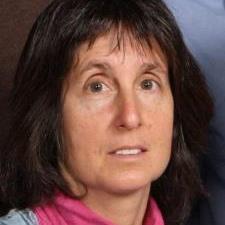
Victoria V. answered • 05/17/16
Tutor
5.0
(402)
Math Teacher: 20 Yrs Teaching/Tutoring CALC 1, PRECALC, ALG 2, TRIG
Hi Hannah,
If you could cut a piece of graph paper into 4 pieces, draw this same thing on all four: a rectangle with coordinates A(1,3), B(2,3), C(2,6), and D(1,6). Also, onto each graph, draw the given reflection in the y-axis followed by the x-axis, resulting in the image rectangle at A'(-1,-3), B'(-2,-3), C'(-2,-6) and D'(-1,-6). Do these in a one color.
Try out A on one of these grids: Do the reflection in x-axis followed by the reflection in the y-axis with a different color. Does your new image land on top of the original image? (YES)
Try out B on a different of the four girds: Daw a line from the origin to the closet corner of the rectangle. Now rotate the line around the origin - the line goes from the origin to A, so after the 180 degree rotation, the original A should land right on top of the original A'. Therefore, B works.
Try out C on a different grid. The 90 degree rotation makes A''(-3,1). Reflecting just these two points across the x-axis, A''' does not land on the original A', but instead at A'''(-3,-1) so C does NOT work.
Just to be sure, take the 4th grid and draw a dashed line y=x, and a dashed line y=-x. Trace over your original rectangle ABCD with a dark marker. Fold the paper on the dashed line y=x, and trace the image it leaves in the second quadrant with this dark marker. Now fold the paper on the line y=-x. Does the newest image land on the original A'B'C'D'? (Yes - so D works).
Final answer: only C does not work.

Victoria V.
You are most certainly welcome! :-)
Report
05/18/16





Hannah M.
05/18/16